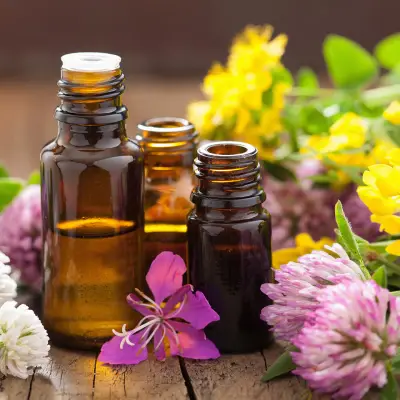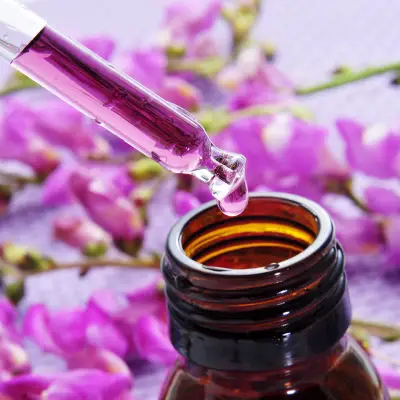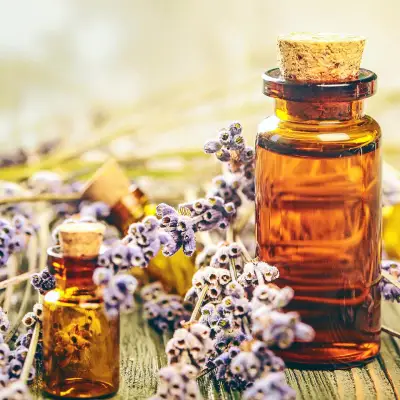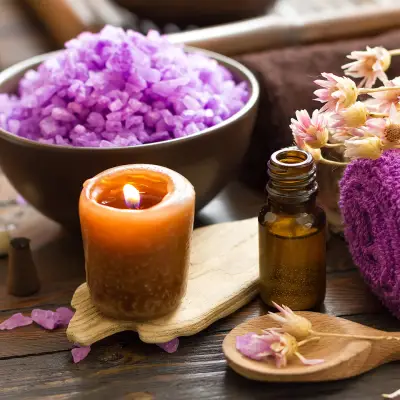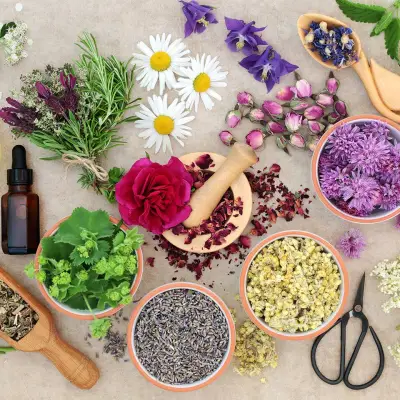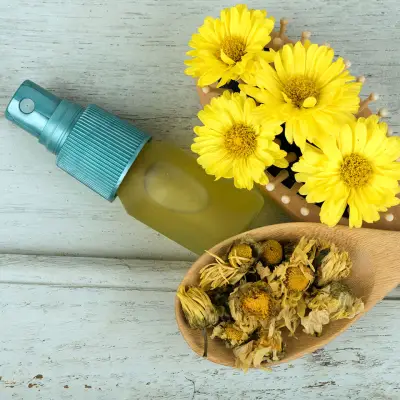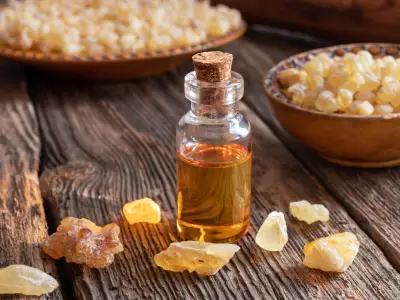Did you know that beyond its relaxing aroma, lavender oil is also loved for its powerful benefits for the skin? Whether you’re dealing with dryness, breakouts, or signs of ageing, this essential oil might just become a welcome addition to your skincare routine.
This guide explores the uses of lavender oil for skin, its benefits, and some common questions you may have.
This article is for informational purposes only and does not constitute medical advice. Always consult with a qualified healthcare professional before starting any new skincare treatment, especially if you have underlying health conditions or allergies.
Jump to:
Recommended for you!
Best SellersWhat is Lavender Oil?
Lavender oil is an essential oil extracted from the flowers of the lavender plant, typically through a steam distillation process. This concentrated oil has a soothing scent and has been used historically in traditional medicine, beauty routines, and aromatherapy.
When people refer to lavender essential oil for skin, they’re usually talking about a high-quality, pure oil that’s either used on its own (with care) or diluted in a carrier oil or skincare product.
It’s not to be confused with lavender extract for skin, which is a gentler, water-based version found in some creams and lotions. Both can offer skin benefits, but essential oil is more potent and requires careful handling.
Is Lavender Oil Good for the Skin?
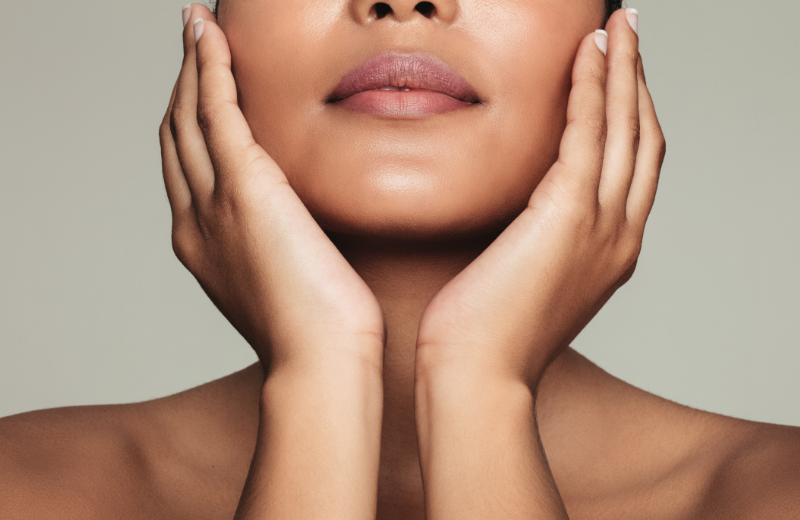
Lavender oil has properties that make it soothing, anti-inflammatory, and antibacterial. This makes it potentially helpful for a range of skin concerns, from acne to dry patches. Some of the benefits of lavender oil for your skin include:
- Calming irritation or redness
- Reducing the appearance of spots and blemishes
- Supporting wound healing
- Easing symptoms of eczema or psoriasis
- Promoting a clearer, more balanced complexion
Lavender Essential Oil Benefits for Skin

Lavender essential oil is widely celebrated for its gentle properties that make it suitable for nearly all skin types. Whether you're dealing with sensitivity, dryness, or breakouts, this natural oil offers a variety of skin-loving benefits. Let’s explore how it can support your complexion in more depth:
1. Helps Calm Inflammation and Redness
Lavender essential oil is naturally anti-inflammatory, which means it can help reduce swelling, redness, and irritation in the skin. This makes it particularly useful for calming conditions such as rosacea, sunburn, or general skin sensitivity.
When applied in diluted form, it may help your skin feel more comfortable and appear visibly more even-toned. Those with delicate or reactive skin often find it especially comforting, thanks to its soothing qualities.
2. May Support Acne-Prone Skin
The antibacterial and antimicrobial properties of lavender oil make it a supportive choice for people who are prone to spots and blemishes. It can help to keep the skin clean and balanced by gently targeting the bacteria that can contribute to acne, all without the harshness of chemical treatments.
When used consistently and safely, it may also help minimise the risk of future breakouts while supporting the skin’s natural balance. Its calming nature can also reduce the redness and discomfort that often comes with active blemishes.
3. Encourages Skin Healing
Lavender oil is known to promote the skin’s natural ability to heal. This makes it a helpful addition to routines aimed at reducing the appearance of marks left behind by spots or small cuts.
The oil can assist in regenerating new skin tissue and speeding up the healing process of minor abrasions or flare-ups. Because of its regenerative qualities, it's often used in natural scar-care blends and is valued by those looking to improve the overall appearance of their complexion.
4. Soothes Dry or Itchy Skin
Lavender essential oil can also be incredibly helpful for dry, flaky, or itchy skin. It has moisturising properties that support the skin’s natural barrier and prevent further water loss. This makes it ideal for those who suffer from seasonal dryness, eczema, or sensitivity-related discomfort.
Used as part of a nourishing blend or added to a gentle base cream, lavender oil can restore comfort to irritated areas and help the skin feel softer and more supple over time.
5. May Reduce Signs of Ageing
Lavender oil is one of the most effective essential oils for combating the signs of ageing. Rich in antioxidants, it helps protect the skin from free radicals — unstable molecules that can contribute to premature ageing. With regular, diluted use, the oil can help maintain skin elasticity and smoothness, contributing to a more youthful, refreshed appearance.
It may soften the look of fine lines and wrinkles while supporting the overall resilience of your skin. Because it works in harmony with the skin’s natural defences, it’s a popular choice for those looking to age gracefully using gentle, plant-based care.
How to Use Lavender Essential Oil on Skin
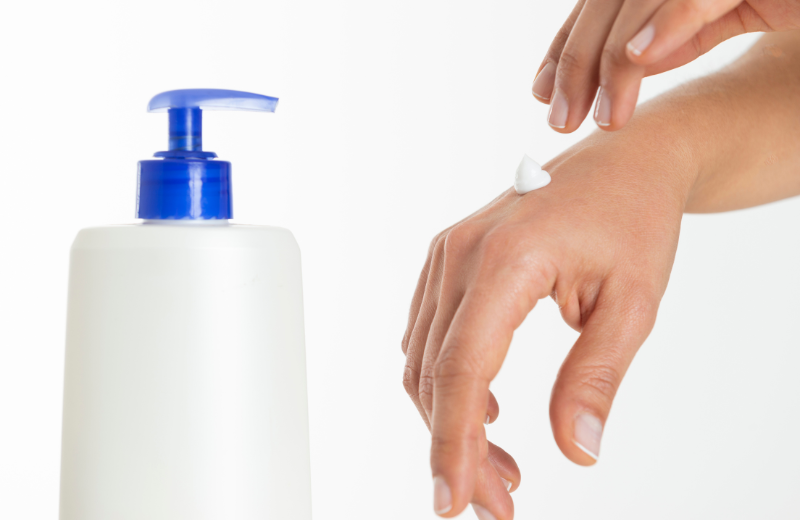
Lavender oil can be incorporated into your skincare routine in various ways, depending on your needs and preferences. Regardless of how you use it, the key is to do so safely and mindfully to enjoy its benefits without irritation.
- Always dilute before applying: Lavender essential oil is highly concentrated and should never be used neat on the skin, especially over large areas. It’s best diluted in a carrier oil such as jojoba, sweet almond, or coconut oil. This makes it gentler on the skin and more suitable for regular use. A useful guideline is to mix 2–3 drops of lavender oil with one tablespoon of carrier oil. Even if your skin isn't particularly sensitive, this dilution helps avoid dryness or irritation over time.
- Mix into your regular moisturiser: One of the simplest ways to use lavender oil is by blending a drop or two into your everyday moisturiser. This method allows you to reap the benefits of lavender essential oil on skin in a gentle and convenient form. It’s advisable to avoid combining it with products that already contain strong active ingredients, such as retinoids or acids, to prevent any potential reaction. This approach works well for daily or evening skincare routines.
- Use as a targeted spot treatment: For those with occasional blemishes, a diluted blend of lavender oil can be used as a spot treatment. Mix a drop of the oil with a few drops of carrier oil and apply it directly to the affected area using a clean cotton bud. This method can help reduce redness, soothe the skin, and support the healing process without overly drying or irritating the surrounding area.
- Create a calming lavender oil face mask: Homemade face masks offer a natural way to treat your skin. You can combine lavender oil with soothing ingredients like yoghurt, honey, or ground oats to create a nourishing mask. Add just one or two drops of the oil to the mix and apply evenly to the face, avoiding the eye area. Leave it on for 10–15 minutes, then rinse with warm water. This is an enjoyable and relaxing way to experience various lavender oil skin uses in a pampering session.
- Include in your night-time routine: Lavender’s calming aroma makes it perfect for the evening. Adding a few drops of lavender essential oil to your night cream or facial oil can enhance your skincare while also encouraging rest and relaxation. This dual benefit supports both your skin and your overall sense of calm as you wind down before sleep. It’s an especially appealing option if you prefer a more holistic approach to skincare.
Recommended for you!
Best SellersFrequently Asked Questions About Lavender Oil for Your Skin
How should you apply lavender oil to the face safely?
Always dilute lavender essential oil in a carrier oil or moisturiser before applying it to your face. Use clean hands and avoid the delicate eye area to reduce the risk of irritation or stinging. Applying it in small, targeted amounts helps your skin adapt and makes it easier to notice any sensitivity.
How many drops of lavender oil should I put on my face?
When diluted, 1–2 drops of lavender oil mixed with a tablespoon of carrier oil is usually sufficient for the face. Using more than this can overwhelm the skin and lead to dryness, especially for those with sensitive skin types. Sticking to a small amount allows you to enjoy the benefits without overdoing it.
What happens if you use too much lavender oil on your skin?
Using too much lavender oil can lead to dryness, increased sensitivity, or allergic reactions. As with most essential oils, a little goes a long way. Applying more than recommended won’t increase the benefits and may actually cause discomfort or damage to the skin’s barrier.
What are the side effects of lavender oil on the face?
While side effects are uncommon, they can include redness, itching, or a rash, particularly if the oil is applied without proper dilution. To avoid any issues, always carry out a patch test on a small area of skin before full application. If any irritation occurs, discontinue use immediately and apply a gentle, unscented moisturiser.
Can I use lavender oil every day on my skin?
You can use lavender oil daily if your skin tolerates it well, but it's best to start slowly. Begin with two to three applications per week and monitor your skin’s response. Over time, you can build up to daily use if there’s no sign of irritation or sensitivity.
Can lavender oil clog pores?
Lavender oil is generally non-comedogenic, meaning it’s unlikely to clog pores for most people. However, if it's blended with a heavier carrier oil or used in excess, it may cause congestion in very oily or acne-prone skin. Choosing the right carrier oil, like jojoba or grapeseed, can help keep pores clear while still providing hydration.
Who should avoid lavender oil?
Although there are many lavender oil skin uses, it’s not suitable for everyone. Avoid it if you have known allergies to lavender, and speak to a doctor before using it if you’re pregnant, breastfeeding, or using other strong skin treatments. It’s also best to steer clear of applying it to broken skin or wounds unless advised by a healthcare professional.
Study Our Essential Oils Business Diploma for £29
If you’re interested in going beyond just personal use and would like to learn more about working with essential oils in a professional capacity, now is the perfect time. Centre of Excellence offers a detailed Essential Oils Business Diploma Course, designed to teach you everything you need to know about using and selling essential oils confidently. You can get full access to this course for just £29 when you follow the link below.


